Why can't I activate eco mode on my Panasonic KX-TG6611E Cordless Telephone?
- SShelly MilesSep 8, 2025
You cannot set eco mode on your Panasonic Cordless Telephone when you set the repeater mode “On”. If required, set the repeater mode to “Off”.
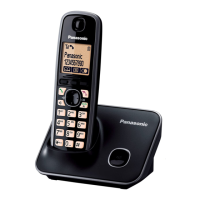
Why can't I activate eco mode on my Panasonic KX-TG6611E Cordless Telephone?
You cannot set eco mode on your Panasonic Cordless Telephone when you set the repeater mode “On”. If required, set the repeater mode to “Off”.
What to do if my Panasonic Cordless Telephone does not work?
If your Panasonic Cordless Telephone is not working, ensure the batteries are installed correctly and fully charged. Check all connections. Try unplugging the base unit’s AC adaptor to reset the unit, turn off the handset, reconnect the adaptor, and turn on the handset again. Also, ensure the handset is registered to the base unit.
Why can't I hear a dial tone on my Panasonic KX-TG6611E?
If you cannot hear a dial tone on your Panasonic Cordless Telephone, ensure you are using the supplied telephone line cord. Check that the base unit’s AC adaptor or telephone line cord is connected properly. If the issue persists, disconnect the base unit from the telephone line and connect the line to a known working telephone to determine if the problem is with the unit or your service provider.
Why is my Panasonic Cordless Telephone beeping and the battery icon flashing?
If the handset of your Panasonic Cordless Telephone beeps and/or the battery icon flashes, it indicates that the battery charge is low. Fully charge the batteries.
Why is the base unit of my Panasonic KX-TG6611E Cordless Telephone not ringing?
If the base unit of your Panasonic Cordless Telephone does not ring, check if the ringer volume is turned off and adjust it.
Why is the display blank on my Panasonic Cordless Telephone handset?
If the handset display of your Panasonic Cordless Telephone is blank, turn the power on.
Why can't my greeting message be heard properly on my Panasonic Cordless Telephone?
If your own greeting message cannot be properly heard on your Panasonic Cordless Telephone, record your own greeting message again.
Why does my Panasonic KX-TG6611E Cordless Telephone return to standby mode while programming?
While programming your Panasonic Cordless Telephone, the display may return to standby mode if a call matching an entry in the call barred list is being received. Wait and try again later.
Why is caller information slow to display on my Panasonic KX-TG6611E Cordless Telephone?
Caller information on your Panasonic Cordless Telephone may display slowly because, depending on your service provider, the unit may display the caller’s information at the 2nd ring or later. Moving closer to the base unit may also help.
Why is caller information not displayed on my Panasonic KX-TG6611E?
If caller information is not displayed on your Panasonic Cordless Telephone, ensure you subscribe to a Caller ID service. If the unit is connected to additional telephone equipment, remove it and plug the unit directly into the wall jack. If you use a DSL/ADSL service, connect a DSL/ADSL filter between the base unit and the telephone line jack. Also, other telephone equipment may be interfering with the unit, so disconnect it and try again.
| Brand | Panasonic |
|---|---|
| Model | KX-TG6611E |
| Category | Cordless Telephone |
| Language | English |
Details the different models and their included base units and handsets, along with part numbers and quantities.
Compares features like answering system and intercom availability across different product series.
Lists supplied accessories such as AC adaptors, cords, batteries, and handset covers.
Provides information on ordering additional or replacement accessories like rechargeable batteries and DECT repeaters.
Explains how to expand the phone system by registering optional handsets, up to a maximum of six.
Provides contact details for customer communication, website, and direct sales information for accessories.
Details network compatibility, contact for problems, declaration of conformity, and authorized representative.
Covers crucial safety warnings regarding power connection, installation, and general product usage to prevent injury.
Provides guidelines on safe operation, cleaning, and consulting medical device manufacturers regarding RF shielding.
Warns about installing during storms, in wet locations, and using caution with telephone lines and outlets.
Details essential safety precautions for reducing risks of fire, electric shock, and injury, including usage near water and during storms.
Offers advice on optimal base unit placement and keeping the product away from electrical noise and direct sunlight.
Provides guidance on cleaning, product disposal, and recycling of old equipment and batteries according to EU directives.
Lists technical details including standard, frequency range, RF transmission power, power source, consumption, and operating conditions.
Details how to connect the AC adaptor and telephone line cord to the base unit, including correct and incorrect configurations.
Provides instructions for installing and charging Ni-MH batteries, including important notes and warnings.
Offers guidance on connections, power failure procedures, and battery installation notes for optimal setup.
Explains battery level indicators and details the controls for both base unit models.
Details handset buttons, navigator keys, soft keys, and explains various items displayed on the handset screen.
Explains base unit display icons and the functions of handset soft keys for various operations.
Covers turning the unit on/off, initial settings, display language, and the one-touch eco mode feature.
Provides instructions for connecting the charger and mounting the base unit on a wall.
Details how to make calls, use the speakerphone, adjust volume, and manage redial lists and pauses.
Explains how to answer calls, use the auto-talk feature, adjust ringer volume, and temporarily turn off the ringer.
Describes how to use call hold, mute function, and the recall/flash feature for PBX systems and services.
Explains features for call waiting, handset equalizer for clearer sound, and call sharing.
Details how to lock and unlock the handset keypad to prevent unauthorized use or changes.
Covers adding, finding, calling, editing, erasing, and searching phonebook entries.
Explains how to dial phone numbers from the phonebook while on an active call, useful for access codes.
Instructions on how to copy individual or all phonebook entries between compatible handsets.
Details two methods for accessing programmable settings: menu scrolling and direct command codes.
Provides a table of menu options, sub-menus, settings, command codes, and reference page numbers for programming.
Covers programming for general settings, time, intercom, ringer volume, ringtone, night mode, and call barring.
Details initial setup options including ringer settings, time, handset name, eco setup, display, keytones, and security features like privacy mode and PIN.
Covers repeater mode setup, handset registration/cancellation, language settings, and programming the alarm function.
Explains how to set night mode, change its start/end times, set ring delay, and change handset names.
Details how to block unwanted calls by setting up incoming call barring, specifically for Caller ID subscribers.
Covers storing unwanted callers, setting call restrictions, managing the base unit PIN, and registering units.
Details the process of registering and deregistering handsets, and explains how to increase base unit range with a DECT repeater.
Explains how Caller ID service works, displaying caller information, missed calls, and managing the caller list.
Details viewing the caller list, calling back numbers, and editing caller information before making a call.
Covers erasing selected or all caller information and storing caller details directly into the phonebook.
Introduces the answering system, its memory capacity, and how to turn it on/off and use call screening.
Details recording and playing greeting messages, using pre-recorded options, and managing messages on the base unit.
Explains how to operate the answering system during playback and erase all recorded messages.
Covers listening to messages on the handset, calling back callers, and setting up remote operation with an access code.
Explains the remote access code requirement and how to erase all messages remotely.
Details remote operation commands, voice guidance, turning the system on remotely, and setting the number of rings.
Explains how to set the unit to play a greeting message without recording caller messages.
Explains voice mail as an alternative to the unit's answering system and notes on message indication and service provider interaction.
Details how to make, answer, and transfer intercom calls, and how to locate a misplaced handset.
Explains how to transfer outside calls or establish conference calls with an outside party.
Explains how to enter characters using dial keys and describes various character entry modes like Alphabet, Numeric, and Greek.
Provides character tables for Extended 1 (AÄÅ), Extended 2 (SŚŠ), and Cyrillic (АБВ) character sets.
Lists common display messages and their causes/solutions, such as 'Base no power' or 'Memory Full'.
Provides initial troubleshooting steps for common problems like the handset not turning on or losing communication.
Addresses issues like the unit not working, blank display, no dial tone, language problems, and programming interruptions.
Covers troubleshooting for eco mode, handset registration, and PIN management, including recovery methods.
Troubleshoots battery recharge problems and issues related to making/answering calls and intercom, including noise and no ringing.
Addresses issues with Caller ID display, phonebook name display, and problems with the answering system recording messages or greeting.
Troubleshoots issues with operating the answering system remotely and provides guidance for liquid damage to the handset/base unit.
Details the terms and conditions of the product guarantee, including purchase location, warranty period, and exclusions.
Summarizes key troubleshooting steps, battery recommendations, and provides helpline contact information and website.
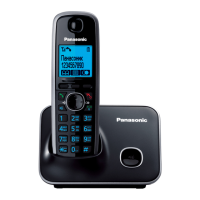
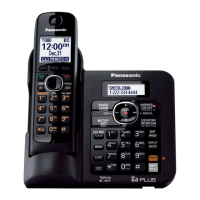

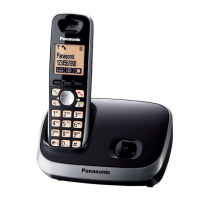



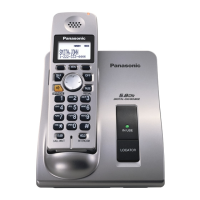


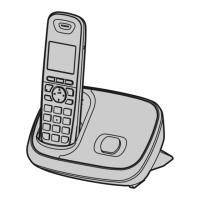
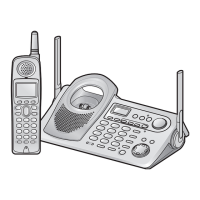
